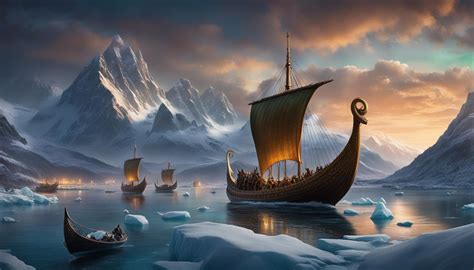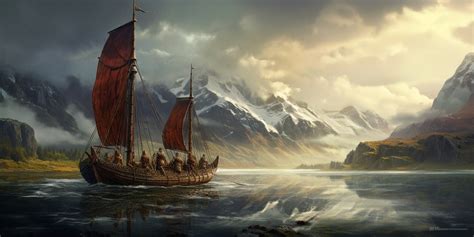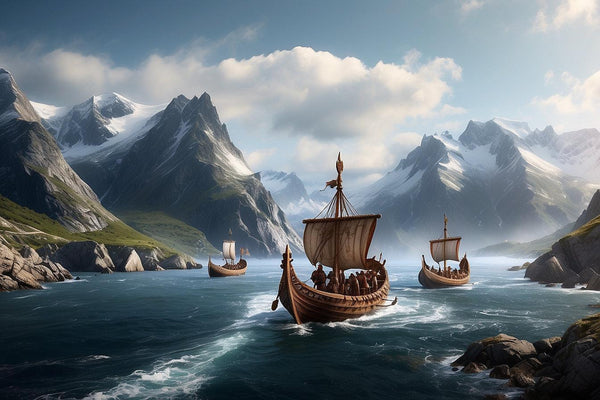Folklore is deeply intertwined with the geographic features that define the landscapes of various regions. From towering mountains to mystical rivers, natural elements have inspired cultural legends, shaping the way people view the world around them. In this exploration, we delve into the rich tapestry of global folklore, uncovering the myths and stories that are tied to the unique terrains of different cultures. Whether it’s the sacred rivers believed to house water spirits or the legendary peaks shrouded in mystery, these tales offer a glimpse into how human imagination and geography merge to create powerful narratives. Join us as we journey through mountains, forests, deserts, and coasts, discovering the stories that bring these natural wonders to life.
ritarblog.com will take you through an extensive exploration of this topic.
1. Introduction to Folklore and Geographic Features
Folklore serves as a bridge between people and the natural world, often reflecting the environment in which it originates. Throughout history, geographic features like mountains, rivers, forests, and deserts have been the backdrop for stories passed down through generations. These tales not only entertain but also provide explanations for natural phenomena, helping communities connect with the land around them.
Different regions cultivate their own folklore, rooted in the unique landscapes that define their surroundings. These stories often imbue geographic features with spiritual or mystical significance, portraying them as the dwelling places of gods, spirits, or mythical creatures. By examining folklore through the lens of geography, we gain insight into how natural formations influence cultural identity and beliefs.
As we explore various landscapes and their associated legends, it becomes clear that geography plays an essential role in shaping the folklore of a place. This connection between physical terrain and cultural myth continues to enrich the heritage of communities across the globe, preserving both their natural and cultural histories.

2. Regional Folklore and Its Connection to Natural Landscapes
Regional folklore is often shaped by the unique natural landscapes in which communities live, creating deep connections between the environment and cultural stories. In many parts of the world, geographic features such as mountains, rivers, and forests are not only seen as physical landmarks but also as sacred or mystical places inhabited by spirits, gods, or mythical beings. These landscapes inspire tales that explain natural events, convey moral lessons, or provide a sense of belonging and identity.
For example, the towering peaks of the Himalayas are revered in local myths as the abode of gods, while the dense forests of Europe are often portrayed as enchanted realms, home to fairies and other magical creatures. In arid regions, desert folklore may revolve around the harshness of the landscape and the endurance of its inhabitants, while coastal communities tell tales of the sea and its mysterious depths. This connection between regional folklore and natural features creates a cultural map that mirrors the physical world.

3. Mountains and Myths: Legendary Peaks Around the World
Mountains have long held a place of reverence and mystique in the folklore of cultures around the world. These towering peaks often symbolize the connection between the heavens and the earth, serving as the homes of gods or sites of spiritual significance. In many traditions, mountains are viewed as gateways to the divine, where humans can come closer to celestial forces.
The Himalayas, for example, are deeply sacred in Hindu and Buddhist traditions, believed to be the dwelling place of gods like Shiva. Mount Olympus in Greece is famously considered the throne of the Olympian gods in ancient mythology. Similarly, Japan’s Mount Fuji is revered not only for its beauty but also as a spiritual symbol of endurance and renewal. Across the globe, mountains inspire awe, often becoming the setting for legends of heroic deeds, creation myths, and divine encounters. These stories reflect humanity’s fascination with the majestic power of mountains and their symbolic role in shaping cultural identities.

4. Sacred Rivers and Water Spirits in Various Cultures
Rivers have long been regarded as sacred in many cultures, seen as life-giving forces that nourish the land and its people. These waterways are often associated with deities, spirits, and mythical creatures that embody their power and significance. In numerous traditions, rivers are believed to be inhabited by divine beings or water spirits that control the flow of life, fertility, and even fate.
In Hinduism, the Ganges River is worshiped as a goddess, Ganga, who purifies those who bathe in her waters. Similarly, in African folklore, rivers are home to powerful water spirits like Mami Wata, who is both feared and revered for her ability to grant wealth or disaster. In Celtic mythology, rivers are often linked to goddesses representing life and death, such as the River Boyne in Ireland, associated with the goddess Boann.
These sacred rivers and their accompanying legends reflect the deep cultural reverence for water as a vital, mystical element that sustains both the natural world and spiritual life.
5. Forests and Folklore: Mystical Woods and Their Stories
Forests have long been shrouded in mystery and magic, serving as the backdrop for countless folklore tales across different cultures. These vast, often impenetrable woodlands are seen as places where the ordinary world intersects with the supernatural. In many traditions, forests are portrayed as enchanted realms, inhabited by mythical creatures such as fairies, spirits, and ancient gods.
In European folklore, forests like the Black Forest in Germany or Sherwood Forest in England are filled with tales of hidden treasures, dangerous beasts, and wise old guardians. The Slavic mythological figure Baba Yaga, for instance, is said to dwell deep within the woods, embodying the mystery and danger of the forest. Similarly, Japan’s Aokigahara, a dense forest at the foot of Mount Fuji, is steeped in supernatural legends, with spirits believed to wander among its trees.
Forests symbolize the unknown, a place of transformation and challenge where humans must confront both external dangers and internal fears. These stories reflect the human relationship with nature as a source of both wonder and fear.
6. Desert Legends and the Mystique of Arid Landscapes
Deserts, with their vast expanses of sand and extreme climates, have inspired some of the most captivating legends in global folklore. These arid landscapes, often seen as harsh and unforgiving, are also places of mystery, endurance, and spiritual transformation. Many cultures view the desert as a realm where the physical and spiritual worlds intersect, offering both danger and enlightenment to those who venture into its barren depths.
In Middle Eastern folklore, deserts are home to supernatural beings like the djinn, powerful spirits said to live in remote, desolate places. These entities can either help or harm travelers, depending on their moods and the offerings they receive. The Sahara Desert, the world’s largest, is filled with ancient tales of lost cities buried beneath the sands, waiting to be discovered. Meanwhile, in Native American traditions, the desert is often seen as a place of vision quests, where individuals go to seek wisdom and spiritual guidance from the forces of nature.
Despite their seeming emptiness, deserts are imbued with cultural significance, representing both isolation and revelation. The legends associated with these landscapes highlight the resilience of the human spirit and the awe-inspiring beauty hidden within the starkness of the desert.
7. Coastal Myths: Oceanic Tales and Cultural Narratives by the Sea
Coastal regions have long been a source of fascination and inspiration for folklore, with the sea serving as a powerful symbol of mystery, danger, and boundless opportunity. The ocean’s vastness and unpredictability have led to a rich tapestry of myths and legends, where the sea becomes a character in its own right, filled with deities, spirits, and mythical creatures.
In Greek mythology, the sea god Poseidon wields control over the oceans, with his trident capable of stirring storms and calming waters. Similarly, in Scandinavian folklore, the Norse god Aegir and his wife Ran rule the sea, often depicted as fearsome beings who capture sailors lost in the tempest. Across the Pacific, Polynesian cultures tell tales of Maui, a demigod who fished up islands from the ocean and shaped the world with his exploits.
Coastal myths also often explore themes of transformation and human interaction with the sea, such as mermaids and sirens who lure sailors with their enchanting songs. These stories reflect the profound impact the sea has on human imagination, embodying both the allure and the peril of the oceanic world.
Exploring folklore through the lens of geographic features reveals the deep connection between cultures and their natural surroundings. From sacred mountains and rivers to mystical forests, deserts, and coasts, these tales reflect humanity’s enduring fascination with nature’s power and mystery. As we unravel these legends, we gain a greater appreciation for how landscapes shape and are shaped by the stories we tell.
ritarblog.com

